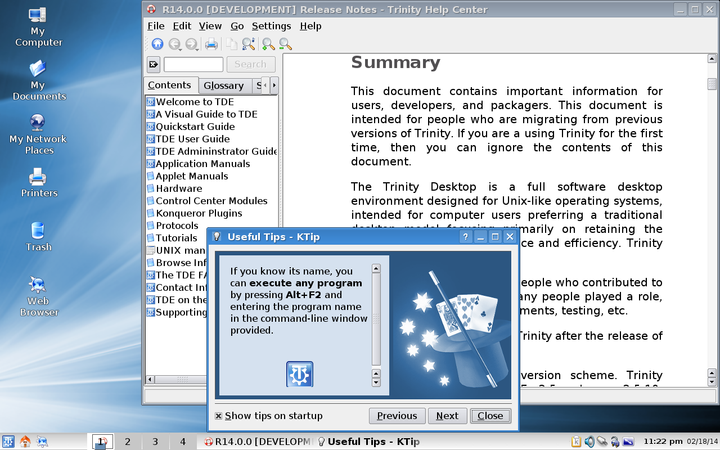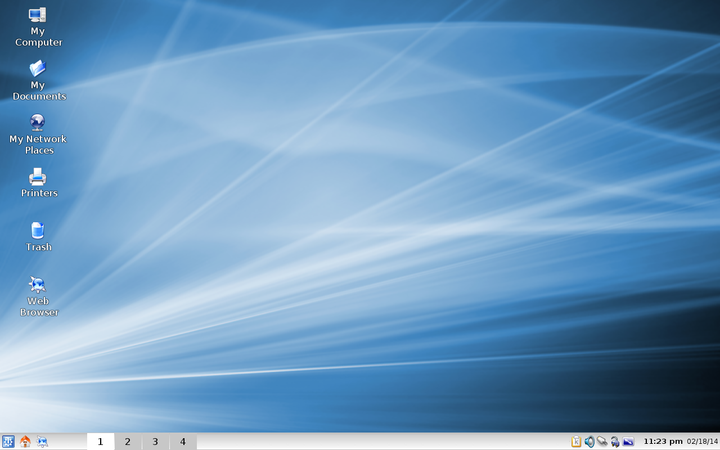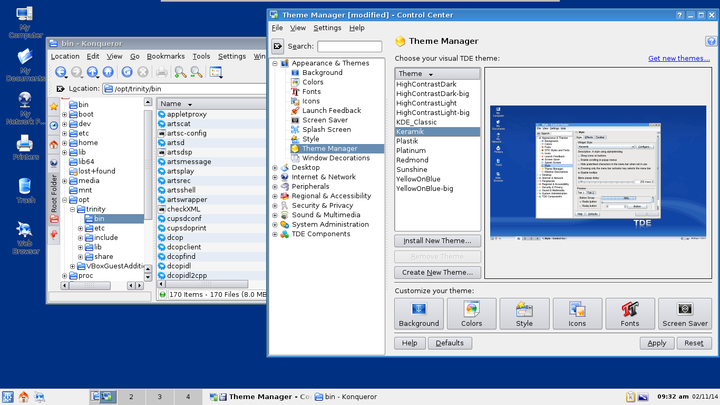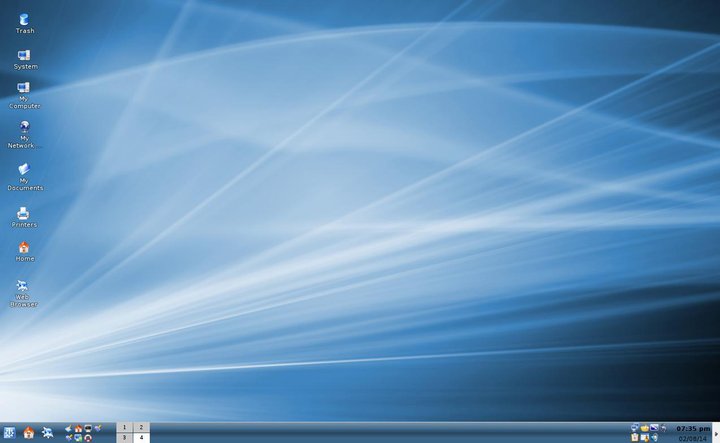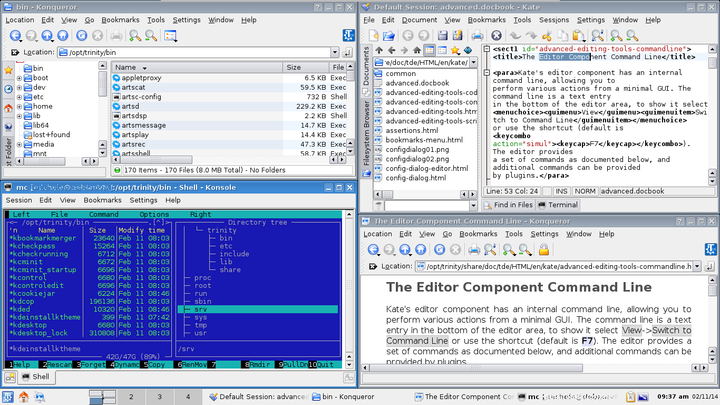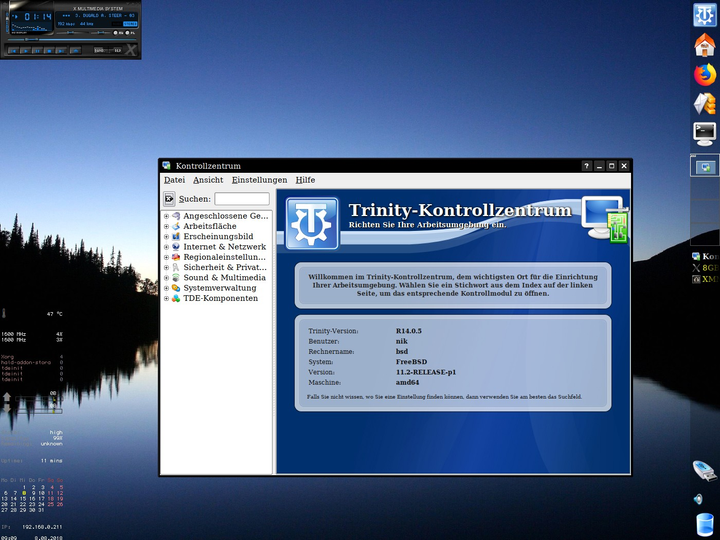Trinity Desktop
By nibeonUpdated on:
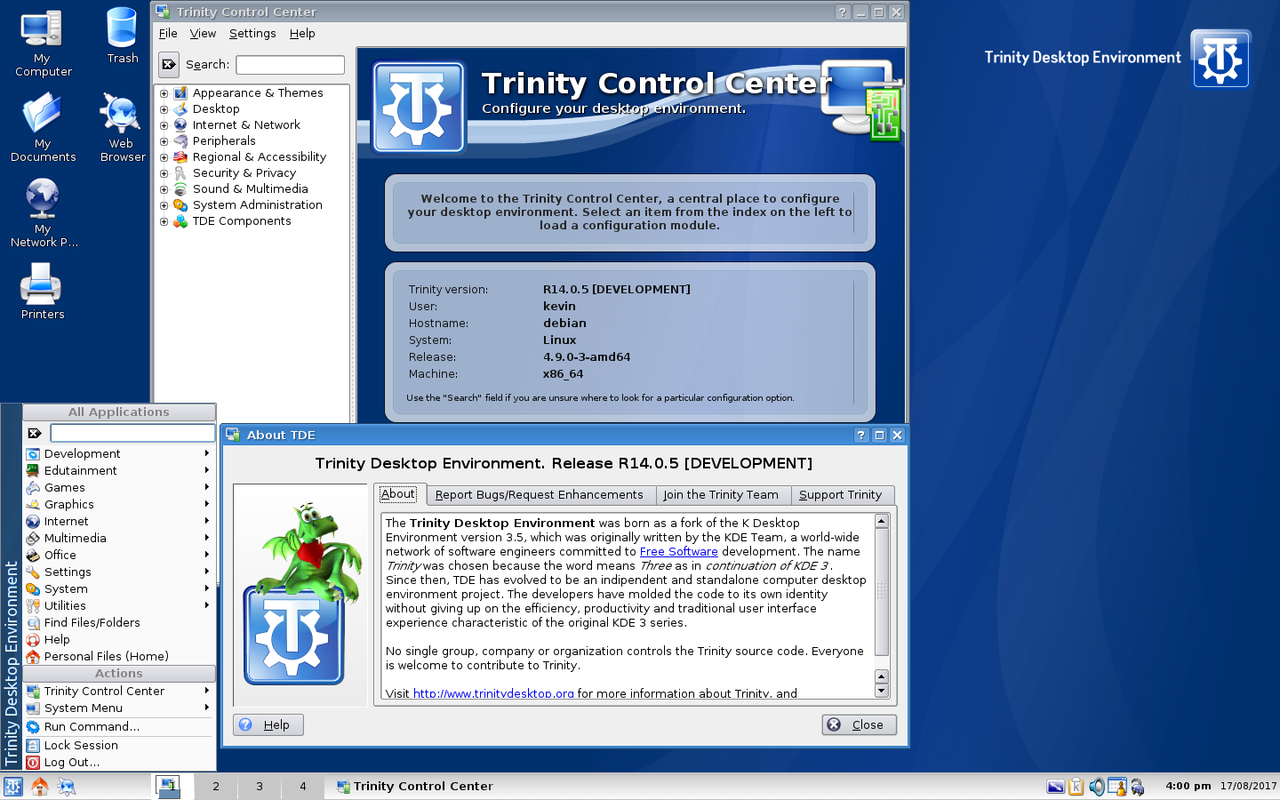
The Trinity Desktop Environment (TDE) is a complete software desktop environment designed for Linux and Unix-like operating systems, intended for computer users preferring a traditional desktop model, and is free/libre software. Born as a fork of KDE 3.5 back in 2010, it was originally created by Timothy Pearson, who had coordinated Kubuntu remixes featuring KDE 3.5 after Kubuntu switched to KDE Plasma 4.
TDE is now a fully independent project with its own personality and development team, available for various Linux distros, BSD and DilOS. It is currently led by Slávek Banko.
TDE releases aims to provide a stable and highly customizable desktop, continuing bug fixes, additional features, and compatibility with recent hardware. Trinity is packaged for Debian, Ubuntu, Devuan, Raspbian, Fedora, RedHat, Mageia, OpenSUSE, Slackware and various other distributions and architectures. It is also used as the default desktop environment of at least two Linux distributions, Q4OS and Exe GNU/Linux. Since version 3.5.12 (its second official release), it uses its own fork of Qt3, known as TQt3, so as to make it easier to eventually make TQt installable alongside later Qt releases.
Of all the TDE features, I would like to highlight the following:
- Several text editors, file manager, image viewers, office apps, archive manager.
- A comprehensive control center to configure the desktop to each user's preferences.
- Supports GTK2/Qt theme engine; tabs, check boxes, menu backgrounds.
- Optional Secure Attention Key to further secure the login and desktop lock dialogs.
- A built-in X11 compositor.
- A TDE-specific DBUS notification client for improved integration with common applications such as Firefox and NetworkManager (not dependant on HAL).
- Prevent OpenGL screen savers from locking the display.
- TQt interface (lays groundwork for selective Qt4 compatibility)
What I like about Trinity Desktop:
- lightweight (at the moment I consider it one of the most lightweight graphical environments on a par with xftse)
- quite a lot of customizability of both functionality and appearance
- a sufficient amount of software, which is sharpened for this shell and is supported by the community
- classical look that can be customized in the style of old version of Windows (for example, Windows XP as in Q4OS)
- several community-supported builds of various Linux distributions on a given graphical environment
So, I think Trinity Desktop is one of the most underrated Linux desktop environments. I would like it to get more attention.
